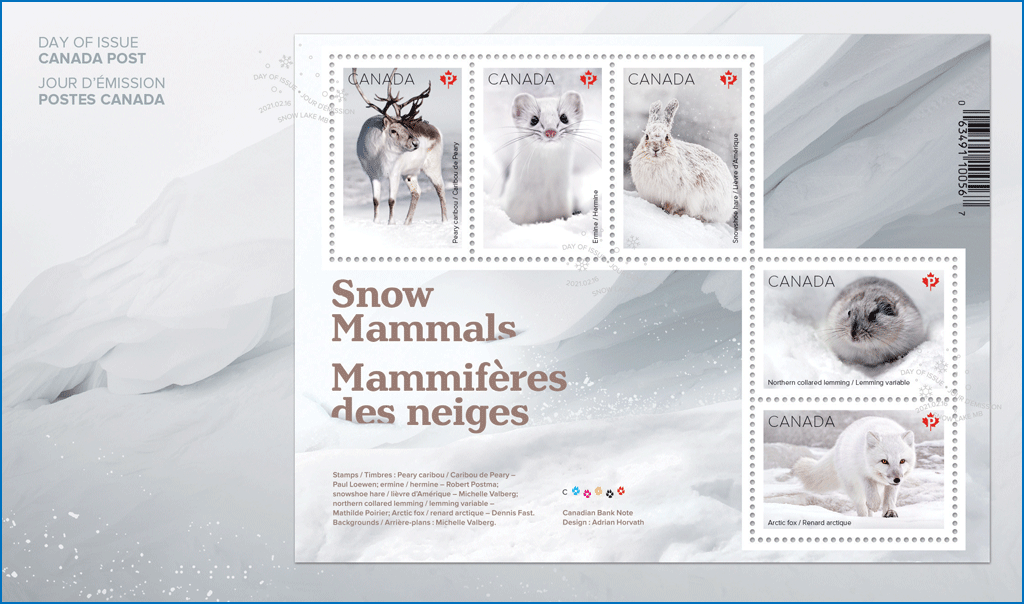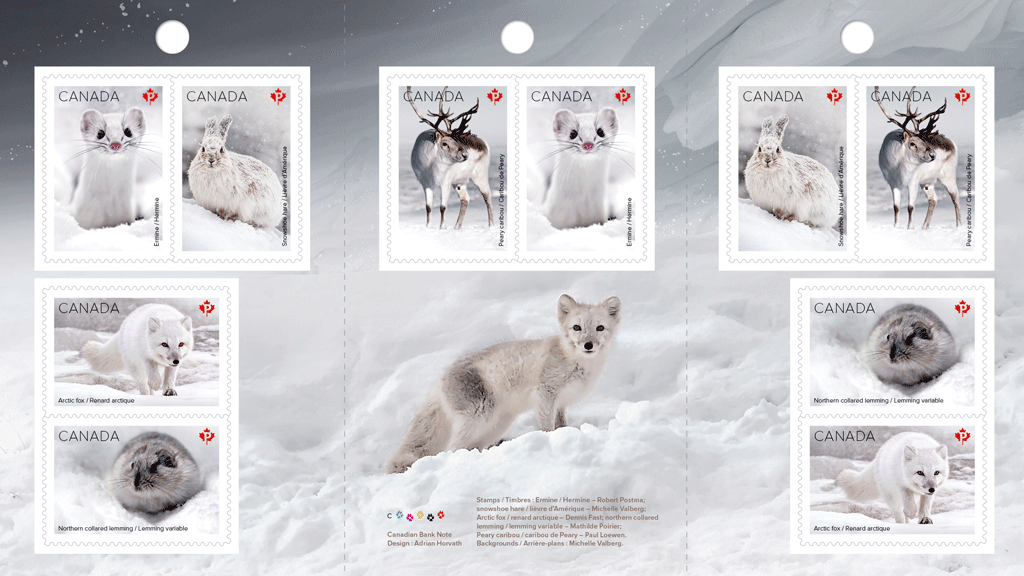[press release] [click any picture for a larger version]
Lovely Jubbly..!
Royal Mail Reveals Images of Only Fools And Horses Stamps Issued To Mark 40th Anniversary Of Popular TV Series

[Click for a larger version]
- Eight stamps feature classic Only Fools and Horses scenes and one-liners
- A further four stamps presented in a miniature sheet include the four main Trotter characters as individual stamps: Del Boy, Rodney, Grandad and Uncle Albert with a catchphrase for each
- Written and created by John Sullivan, the programme ran for 64 episodes from 1981 to 2003 and at its peak was watched by 24.3 million people
- The impact of Only Fools and Horses on the life of the nation is demonstrated by many of the show’s catchphrases and words having entered common usage – in 2003 ‘lovely jubbly’ was listed in the Oxford English Dictionary
- The stamps and a range of collectibles are available for pre-order at www.royalmail.com/onlyfoolsandhorses,by phone on 03457 641641 and 7,000 Post Offices across the UK
- The full set of 12 stamps, available in a Presentation Pack, retails at £16.20
- The stamps go on general sale from 16 February 2021
Royal Mail, in partnership with BBC Studios, today revealed 12 stamp images marking the 40th anniversary year of the popular TV comedy series, Only Fools and Horses.
Eight stamps feature classic Only Fools and Horses scenes and one-liners, while a further four stamps, presented in a miniature sheet, depict the main Trotter family characters as individual stamps; Del Boy, Rodney, Grandad and Uncle Albert with a catchphrase for each. The show follows the exploits of wheeler-dealer Del Trotter, his hapless younger brother, Rodney, their Grandad and later their Uncle Albert.
The show follows the exploits of wheeler-dealer Del Trotter, his hapless younger brother, Rodney, their Grandad and later their Uncle Albert.
Written and created by John Sullivan, the show ran for 64 episodes from 1981 to 2003, and at its peak was watched by 24.3 million people. It now has a regular slot on Gold and 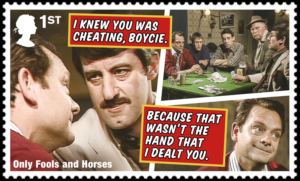 is a firm favourite with viewers – consistently one of the most-watched shows on the UKTV-owned channel.
is a firm favourite with viewers – consistently one of the most-watched shows on the UKTV-owned channel.
When Sullivan first mentioned his idea for a comedy series in which the main character was a fly-pitcher who’d sell anything to make a quick profit, the BBC turned it down flat.
Sullivan’s series, originally entitled, Readies, was set in a modern, vibrant and multiracial London, very different to the kind of forelock-tugging London that was often depicted in films and on TV at the time.
Refusing to give up, Sullivan continued to write and eventually presented his script to BBC Comedy Department boss, John Howard Davies. The Trotters – self-styled entrepreneur 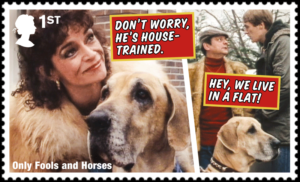 Derek Trotter (Del Boy to his friends), his put-upon younger brother, Rodney, and their crusty old Grandad – came to life on the page.
Derek Trotter (Del Boy to his friends), his put-upon younger brother, Rodney, and their crusty old Grandad – came to life on the page.
Only Fools and Horses got off to a slow start, but it took off after series two was repeated and, by 1985, it was such a success that it had earned a feature-length Christmas episode: ‘To Hull and Back’. From then on, Only Fools became a regular Christmas Day highlight for millions of people, from all walks of life.
In 1989, the length of each episode increased from 30 to 50 minutes, giving John Sullivan space to expand his stories. He even received letters from pub landlords telling him their pubs were deserted on Sunday evenings because so many people were at home 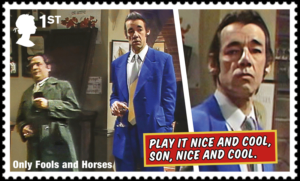 watching the show.
watching the show.
The impact of Only Fools on the life of the nation is demonstrated by many of the show’s catchphrases and words having entered common usage. In 2003, the most popular of these, ‘lovely jubbly’, was listed in the Oxford English Dictionary.
As offers of other work flooded in for the show’s two main stars, it became increasingly difficult to schedule the filming of new episodes and, in 1996, three ‘final’ episodes were recorded. However, in 2001, such was the demand from the public, the team was persuaded back for three more episodes, shown over consecutive years.
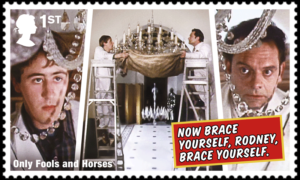 Philip Parker, Royal Mail, said: “The superb writing, comic one liners and the warmth and idiosyncrasies of its characters made Only Fools and Horses one of the most loved TV comedies of all time. We celebrate 40 years of the Trotters’ wheeling and dealing, with new stamps revisiting some of the show’s classic moments.
Philip Parker, Royal Mail, said: “The superb writing, comic one liners and the warmth and idiosyncrasies of its characters made Only Fools and Horses one of the most loved TV comedies of all time. We celebrate 40 years of the Trotters’ wheeling and dealing, with new stamps revisiting some of the show’s classic moments.
The full set of stamps, available in a Presentation Pack, retails at £16.20 and along with a range of collectibles, are available to pre-order at www.royalmail.com/onlyfoolsandhorses, by phone on 03457 641 641 and in 7,000 Post Offices across the UK. The stamps will be on sale from 16 February 2021.
Stamp by stamp:
 Episode: ‘A Losing Streak’
Episode: ‘A Losing Streak’
Del Risks it all in a game of cards with Boycie, but he has a trick up his sleeve
Episode: ‘Sleeping Dogs Lie’
The Trotters agree to look after Boycie and Marlene’s beloved dog, Duke, but soon regret it when the Great Dane falls ill.
Episode: ‘Yuppy Love’
Sharp-suited Del is keen to make an impression with the yuppies in the wine bar … which is exactly what he does
Episode: ‘A Touch of Glass’
Del and Rodney are poised to catch a priceless chandelier – unfortunately it’s not the one Grandad is unscrewing from the ceiling…
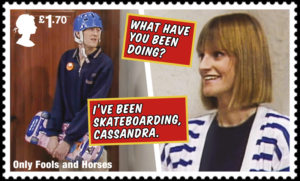 Episode: ‘The Jolly Boys’ Outing’
Episode: ‘The Jolly Boys’ Outing’
The Nag’s Head regulars’ annual beano to Margate goes with a bang – and Trigger loses his dolphin
Episode: ‘The Unlucky Winner Is…’
Rodney wins a holiday in a painting competition he hadn’t even entered – and membership of the Groovy Gang
Episode: ‘Three Men, a Woman and a Baby’
Del and Raquel await the birth of their first child. Rodney, however, is worried about what 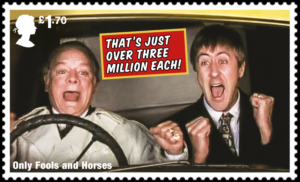 might actually arrive
might actually arrive
Episode: ‘Time on Our Hands’
Raquel’s Dad spots something of value in the Trotters’ lock-up and this time Del and Rodney really do become millionaires
Products:
Stamps — AS6800 — £10.20
Miniature Sheet — MZ161 — £5.10
Stamp Set Pack — AS6800E — £10.50
Miniature Sheet Pack — MZ161A — £5.40
First Class Stamps Pack — AS6800F — £7.10
Presentation Pack — AP486 — £16.20
First Day Cover – Stamps — AF469 — £12.90
First Day Cover – Minisheet — MF157 — £6.80
First Day Cover – PSB pane — HF094 — £6.00
Stamp Souvenir Cover — AW179 — £12.90
Stamp Sheet Souvenir Cover — AW180 — £6.80
First Day Envelope — AE424 — £0.30
Postcards — AQ302 — £5.85
Collectors Sheet — AT124 — £9.60
Prestige Stamp Book — YB095 — £21.70
Limited Edition Prestige Stamp Book — YB096 — £54.99
Retail Stamp Book — UB441 — £5.10
Scripts Souvenir Folder — AW181 — £24.99
Medal Cover — AM081 — £19.99
Silver Medal Cover — AM082 — £99.99
Del Boy Gold Stamp — AS6800G — £49.99
Framed Stamps and Miniature Sheet — N3247 — £49.99
Framed Collectors Sheet — N3248 — £29.99
Boycie Framed Print Signed by John Challis — N3249 — £99.99
Del Boy Framed Print Signed by David Jason — N3250 — £239.99
Bundle (Pres Pack + PSB + Medal Cover) — PK163 — £47.89
Press Sheet — PZ051 — £78.55
The stamps include Del Boy’s fall through the bar in Yuppy Love and the Chandelier scene in A Touch of Glass both frequently voted among the funniest TV moments of all time.
Technical details – Stamps Number of stamps: Eight
Number of stamps: Eight
Value of Stamps: 4 x 1st, 4 x £1.70
Design: Interabang
Acknowledgements: BBC and ONLY FOOLS AND HORSES (word marks and logos) are trade marks of the British Broadcasting Corporation and are used under licence. BBC logo © BBC 1996. Only Fools And Horses logo © BBC 1981. Series created and written by John Sullivan. Licensed by BBC Studios.
Stamp Format: Landscape
Number per sheet: 30/60
Stamp Size: 50mm x 30mm
Printer: International Security Printers
Print Process: Lithography
Perforations: 14 x 14
Phosphor: Bars as appropriate
Gum: PVA
Miniature Sheet
• Includes the four main Trotter characters as individual stamps; Del Boy, Rodney, Grandad and Uncle Albert with a quote for each
• Perforated against a background featuring Del and Rodney with the unmistakable Trotters Independent Trading yellow three-wheeled van Technical details – Miniature Sheet
Technical details – Miniature Sheet
Number of stamps: Four
Value of Stamps: 2 x 1st, 2 x £1.70
Design: Interabang
Acknowledgements: BBC and ONLY FOOLS AND HORSES (word marks and logos) are trade marks of the British Broadcasting Corporation and are used under licence. BBC logo © BBC 1996. Only Fools And Horses logo © BBC 1981. Series created and written by John Sullivan. Licensed by BBC Studios.
Stamp Format : Landscape
Stamp Size: 41mm x 30mm
Miniature Sheet Size: 192 x 74mm
Printer : International Security Printers
Print Process: Lithography
Perforations: 14.5 x 14
Phosphor: Bars as appropriate
Gum: PVA
 “All requests already sent to Santa Clarita will be forwarded to SFS for processing.”
“All requests already sent to Santa Clarita will be forwarded to SFS for processing.”
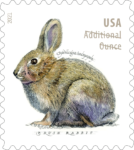 5544 (20¢) Brush Rabbit, serpentine die cut 11¼x11
5544 (20¢) Brush Rabbit, serpentine die cut 11¼x11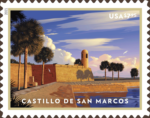 5554 $7.95 Castillo de San Marcos
5554 $7.95 Castillo de San Marcos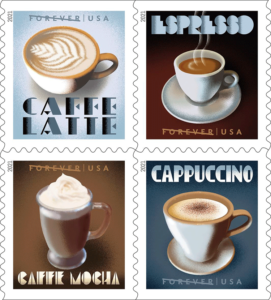 issuance.
issuance.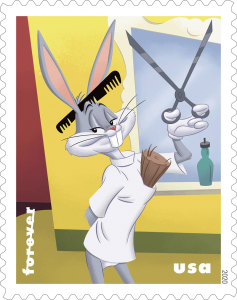 “extraordinary and enduring contributions to American society, history, culture or environment,” the USPS criteria also states “Events of historical significance shall be considered for commemoration on anniversaries in multiples of 50 years.” That was the reason given why the 75th anniversary of the end of World War II was not honored.
“extraordinary and enduring contributions to American society, history, culture or environment,” the USPS criteria also states “Events of historical significance shall be considered for commemoration on anniversaries in multiples of 50 years.” That was the reason given why the 75th anniversary of the end of World War II was not honored.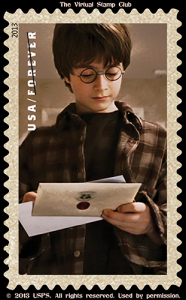 In 2013, the U.S. issued 20 Harry Potter stamps, but none for the 150th anniversary of one of the greatest speeches in American history, the Gettysburg Address. (To add insult to injury, the Potter stamps were issued on the Gettysburg Address anniversary date.) Don’t get me wrong: I love the Harry Potter stories, I read all the books when they first were published, saw all the movies, and I marvel at how it got schoolchildren to read books. But no Gettysburg Address stamp?
In 2013, the U.S. issued 20 Harry Potter stamps, but none for the 150th anniversary of one of the greatest speeches in American history, the Gettysburg Address. (To add insult to injury, the Potter stamps were issued on the Gettysburg Address anniversary date.) Don’t get me wrong: I love the Harry Potter stories, I read all the books when they first were published, saw all the movies, and I marvel at how it got schoolchildren to read books. But no Gettysburg Address stamp? working full-time on reasons to issue new Harry Potter, Star Wars or Star Trek stamps. Part of the justification for honoring the
working full-time on reasons to issue new Harry Potter, Star Wars or Star Trek stamps. Part of the justification for honoring the 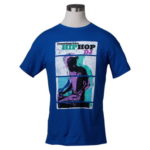 make money from related products, like coffee mugs, sweatshirts and framed prints.
make money from related products, like coffee mugs, sweatshirts and framed prints.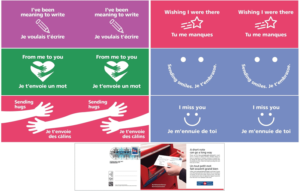 Canadians stay in touch now, when it matters so much, Canada Post will deliver approximately 13.5 million postcards, one to every residential address in the country.
Canadians stay in touch now, when it matters so much, Canada Post will deliver approximately 13.5 million postcards, one to every residential address in the country. Mr. David McLaughlin, chair of CAPEX 22 stated “We are pleased that R. Maresch & Son will be continuing their 71-year support of CAPEX international exhibitions in Canada. Three generations of the Maresch family have helped Canadian and international collectors build their collections for almost a century now since Dr. Richard A R Maresch became a stamp dealer in Vienna in 1924.”
Mr. David McLaughlin, chair of CAPEX 22 stated “We are pleased that R. Maresch & Son will be continuing their 71-year support of CAPEX international exhibitions in Canada. Three generations of the Maresch family have helped Canadian and international collectors build their collections for almost a century now since Dr. Richard A R Maresch became a stamp dealer in Vienna in 1924.”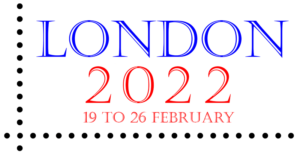
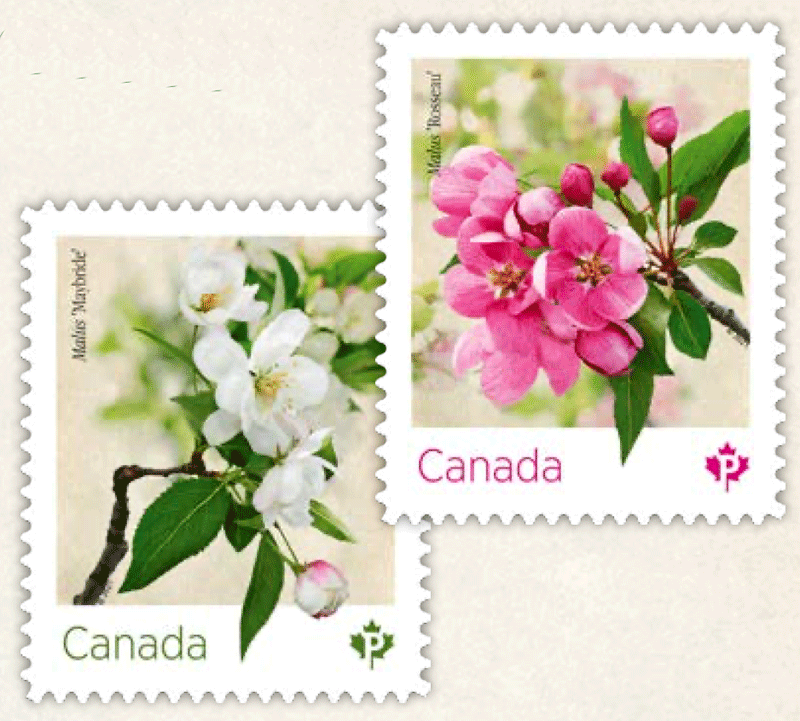
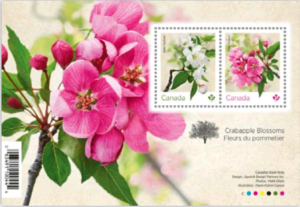 The pretty bright-pink flower of Malus ‘Rosseau’ was introduced in 1928 by the Central Experimental Farm’s pioneering ornamental plant breeder, Isabella Preston. The delicate white bloom of Malus ‘Maybride’ is a dwarf cultivar bred by Preston’s successors, Daniel Foster Cameron and Dexter Reid Sampson.
The pretty bright-pink flower of Malus ‘Rosseau’ was introduced in 1928 by the Central Experimental Farm’s pioneering ornamental plant breeder, Isabella Preston. The delicate white bloom of Malus ‘Maybride’ is a dwarf cultivar bred by Preston’s successors, Daniel Foster Cameron and Dexter Reid Sampson.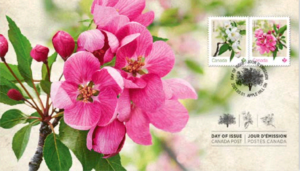 fruit. Serious foodies also note that crabapple wood is excellent for smoking meats and cheeses.
fruit. Serious foodies also note that crabapple wood is excellent for smoking meats and cheeses.
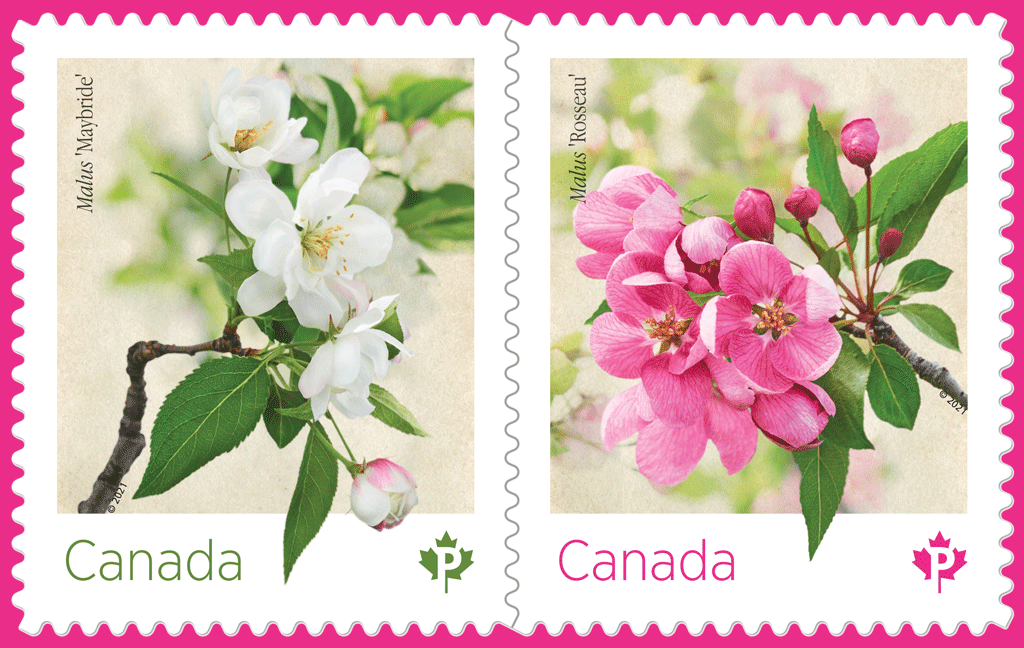
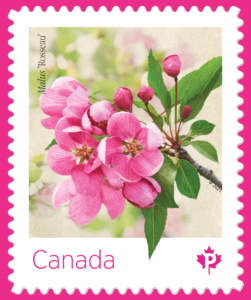
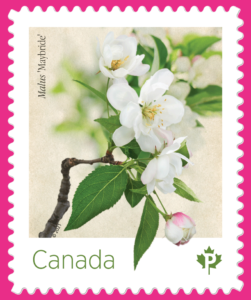
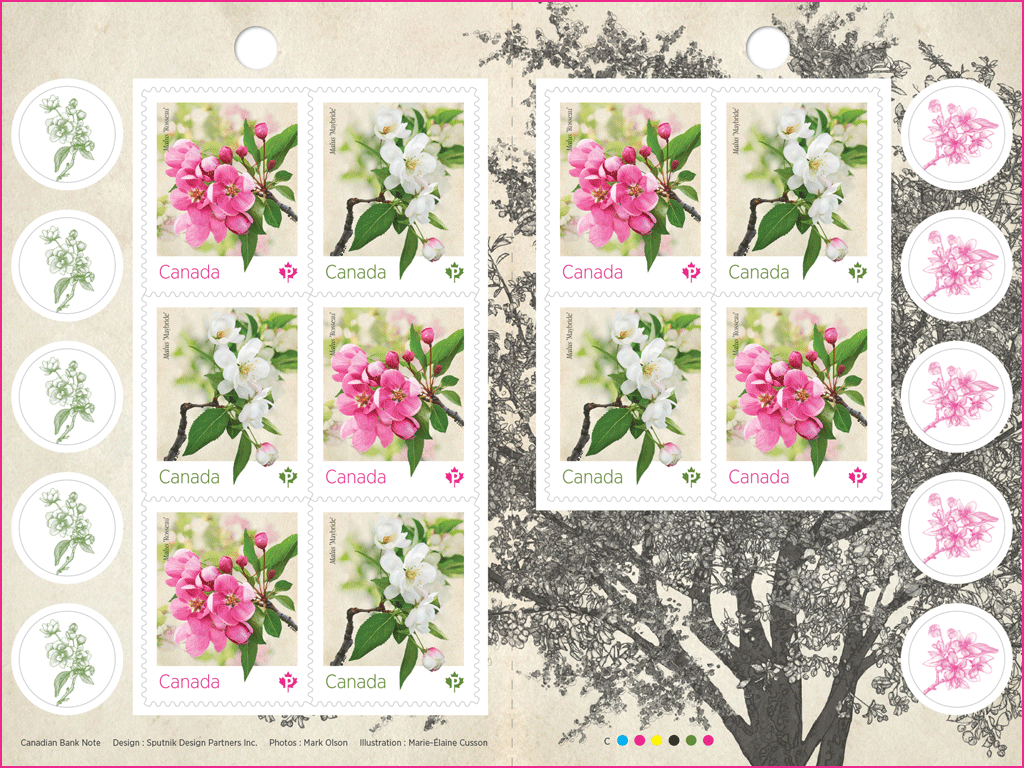

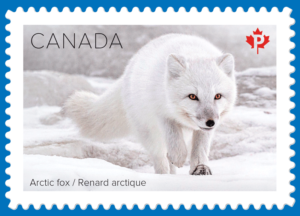 because their otherwise dark coats turn white in winter.
because their otherwise dark coats turn white in winter.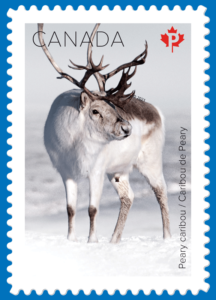 snowshoe hare and northern collared lemming (dietary staples of many carnivores) and Peary caribou try to blend into the background to escape detection.
snowshoe hare and northern collared lemming (dietary staples of many carnivores) and Peary caribou try to blend into the background to escape detection. Mathilde Poirier the northern collared lemming; and Paul Loewen the Peary caribou.
Mathilde Poirier the northern collared lemming; and Paul Loewen the Peary caribou.
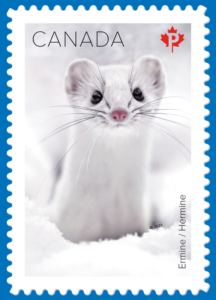 Les timbres consacrés aux mammifères des neiges mettent en vedette cinq animaux du Canada qui ont la capacité unique de s’adapter à nos hivers en changeant la couleur de leur pelage au gré des saisons.
Les timbres consacrés aux mammifères des neiges mettent en vedette cinq animaux du Canada qui ont la capacité unique de s’adapter à nos hivers en changeant la couleur de leur pelage au gré des saisons.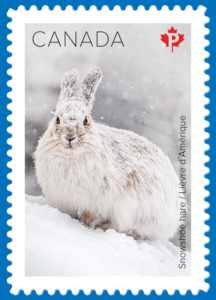 Ces 5 animaux sont au nombre des 19 espèces de mammifères dans le monde, dont 12 au Canada, qui changent de couleur grâce à un processus physiologique complexe influencé par une sensibilité à la durée du jour. Leur pelage commence graduellement à blanchir après la première neige. Ce processus s’inverse au printemps.
Ces 5 animaux sont au nombre des 19 espèces de mammifères dans le monde, dont 12 au Canada, qui changent de couleur grâce à un processus physiologique complexe influencé par une sensibilité à la durée du jour. Leur pelage commence graduellement à blanchir après la première neige. Ce processus s’inverse au printemps.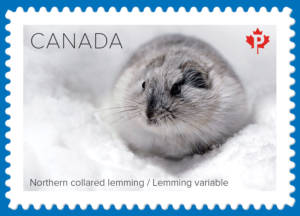 Dans le coin inférieur gauche de chaque vignette se cachent les traces laissées par l’animal dans la nouvelle neige, visibles seulement sous une lumière ultraviolette (lumière noire).
Dans le coin inférieur gauche de chaque vignette se cachent les traces laissées par l’animal dans la nouvelle neige, visibles seulement sous une lumière ultraviolette (lumière noire).